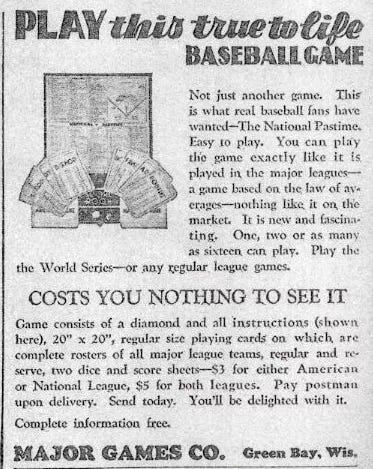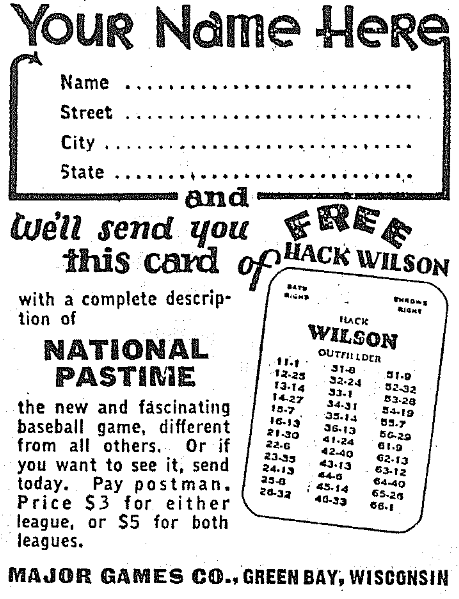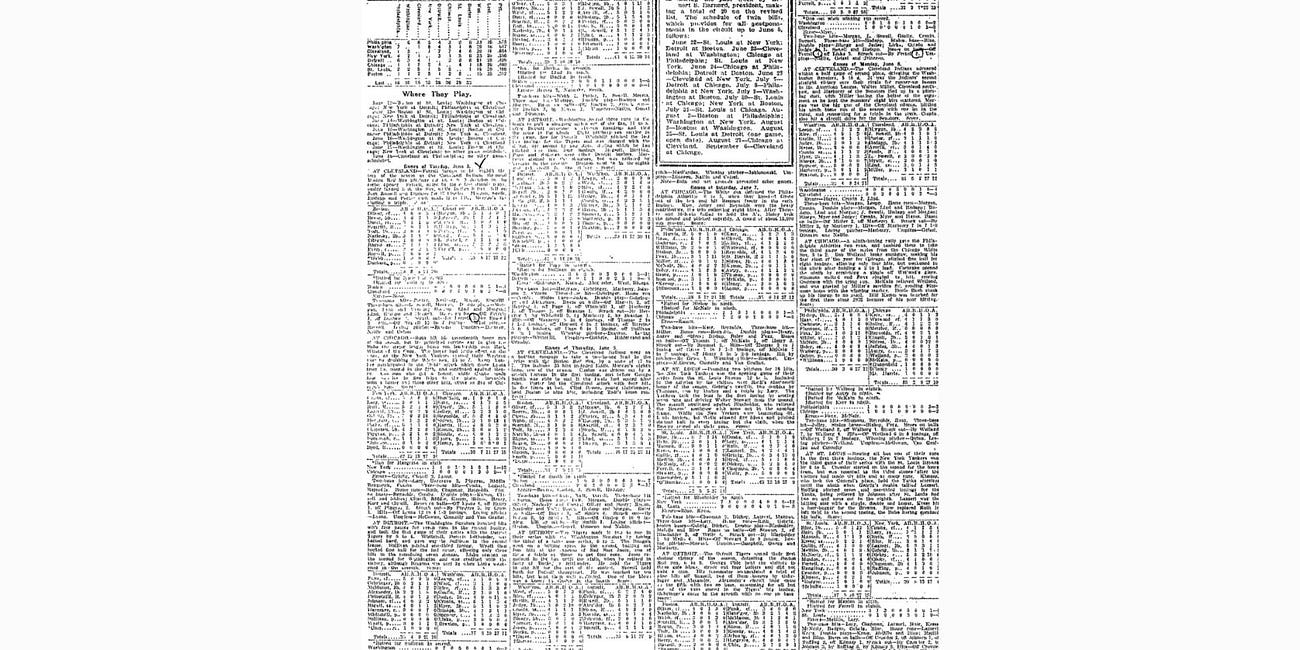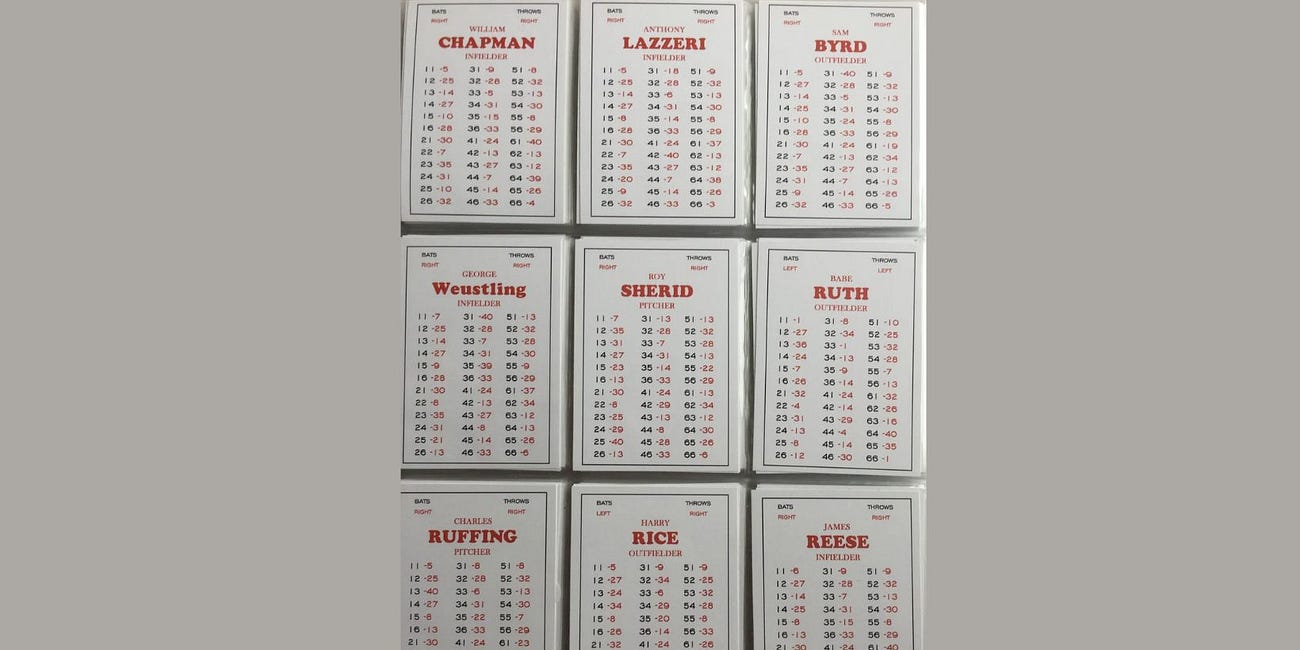National Pastime
This is not a blog about the old National Pastime board game.
Initially, I wanted to write a few posts about the connection between Clifford Van Beek’s extremely obscure 1930 creation and J. Richard Seitz’ 1951 APBA baseball game.
However, as I started to research things, I realized that there was a huge story that had never been told — one that seems to have been ignored by most outsiders.
As a result, this blog has included a number of in-depth posts about the history of National Pastime.
Below is an index of these posts. I’ll update these as I write new articles and make new discoveries.
National Pastime
History Lesson I’ve been thinking of writing this post for months now. Actually, I’ve been thinking for a few years that somebody should address some of these issues. It wasn’t until recently that I decided that this “somebody” should be me. There’s a lot of misinformation out there. Some people believe that J. Ric…
How Many National Pastime Games Were Sold?
The National Pastime Mysteries I’ve identified 4 mysteries surrounding National Pastime. Now, I’m not an expert on this stuff. I don’t have definitive answers. However, I do think I’ve come across some information that might add to this discussion.
Which Year Was National Pastime Based On?
1929 or 1930? If you know the history of National Pastime, you’re going to think this is a silly question. Since the beginni…
Why The Wait?
Why The Wait? This one is going to be very speculative, so be warned. Clifford Van Beek’s National Pastime patent application was granted in 1925 — on May 5, 1925, to be exact. However, his game was not released until late 1930. Why did it take so long?
Before National Pastime - Part 1
Before National Pastime I need to be very careful about this. I don’t want to spend too much time tracking down a bunch of random old baseball games that are of trivial interest at best. However, it’s history, and I’m a sucker for good history. We’ll talk about a few games in today’s post. When we get to part 2 in a few days, we’ll look in detail at a ga…
Before National Pastime, Part 2
Before National Pastime There are a number of old baseball games that have surfaced over the years. People have claimed that this one or that one might be the predecessor of National Pastime. I think they’re all full of bunk. However, there is one particular game that
None on Bases
None on Bases As I described two days ago, the boards for both of Charles M. Steele’s baseball games use the same odd phrase that Clifford Van Beek used in the National Pastime patent application: “None on Bases.” The truth is that this phrase does show up a few times in old newspaper articles. I’ll show you a few examples below.
The National Pastime Rosters
The National Pastime Rosters I stumbled across this post a few days ago on the Hey Bill portion of Bill James Online:
How Accurate Were Clifford Van Beek's Lineups? — Part One
Before we begin, I want to give a shout out to my friend Bernard Stoum, who saw Roger Clemens throw a no-hitter in his 1986 Red Sox Diamond Mind Baseball replay. You can read a summary of the game and see the boxscore here. Congratulations, Bernard!
How Accurate Were Clifford Van Beek's Lineups? — Part Two
The National Pastime National League Lineups This is the second of two parts. If you haven’t read about the National Pastime American League lineups yet, please check that post out here: https://baseballreplayjournal.substack.com/p/how-accurate-were-clifford-van-beeks
How Did Van Beek Make The Lineups?
How Did Van Beek Make The Lineups? Okay — I’ve spent a lot of time talking about the National Pastime rosters and lineups. If it hasn’t been clear enough yet, I’ll spell it out for you. I think that Clifford Van Beek kept careful track of boxscores as the season went on.
Moving Forward with National Pastime
Moving Forward with National Pastime We’ve been through a bit of preliminary work on National Pastime. We’ve looked at some of Clifford Van Beek’s predecessors and likely sources for inspiration. We’ve also looked at when the game was likely published (I maintain that it likely came out in December 1930, much earlier than we first thought), and we’ve l…
Dissecting National Pastime
Dissecting National Pastime I’ve been a little bit hesitant to write this post. Once we started looking closely at Clifford Van Beek, I knew that I was going to have to start taking apart National Pastime to see what I could find. It wasn’t going to be enough to simply rely on the work that others have done.
Historic On Base Situations
Historic On Base Situations Ever wonder what percentage of plate appearances come with the bases empty? Or with a runner on second? Have you ever wonder if this number has changed over time? If you’re an average baseball fan, you’ve probably never thought about any of this. You probably figure that players play the same way regardless of the on base situ…















